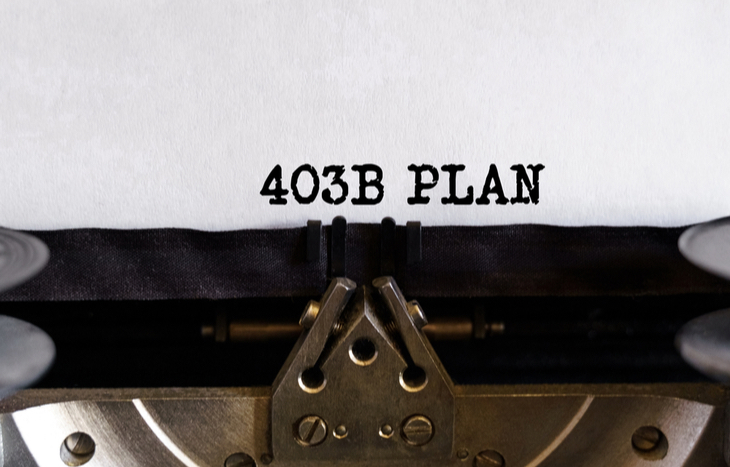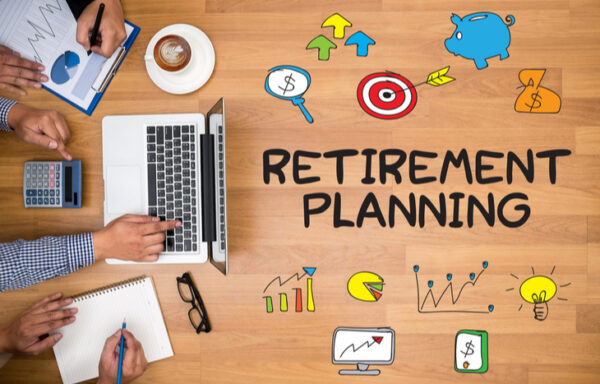403(b) Plan Definition: What is a 403(b) Plan?
While most people are more familiar with a 401(k) account, it’s important to note their cousin: the 403(b) plan. Therefore, are you looking for a 403(b) plan definition? It’s another type of retirement account that functions much like a 401(k). The chief difference comes from the fact that this type of account is generally reserved for public schools, health service professionals and tax-exempt organizations. This makes it the de-facto retirement account for teachers, professors, doctors, healthcare administrators and more.
As a retirement vehicle, a 403(b) plan is an important resource in wealth building. If you’re employed in a profession that offers a 403(b) account, it’s vital to take full advantage of it. Here’s what you need to know and what you can do to optimize the ROI of your employer-sponsored 403(b) account.

403(b) Plan Definition and Basics
Many of the similarities shared between 401(k) and 403(b) plans come from their structure and contribution eligibility. Both are qualified retirement plans, and both require employer sponsorship. Employers have the ability to match employee contributions if they so choose, and employees can contribute up to $19,500 annually.
Where 403(b) plans separate themselves from 401(k) plans is in their vesting. Some plans vest immediately, while others offer expedited vesting. This can be a great incentive for employees to remain at an organization and for employers to attract talent.
The final nuance of 403(b) plans is that they’re not beholden to the rules of the Employee Retirement Income Security Act (ERISA). It’s important to note, however, that organizations that want to offer matched contributions do need to meet ERISA standards to offer them.
The Benefits of 403(b) Plans
The benefits of an employer-sponsored retirement plan are well-known, even to new investors. That said, it’s important to look at some of the best reasons to keep contributing money to a 403(b) plan if offered one. Here are just a few reasons to prioritize 403(b) contributions:
- Tax deductible. Contributions made to 403(b) accounts don’t count against taxable income for the year. This lowers your tax burden, while simultaneously ensuring greater retirement savings for the future.
- Tax deferred. Most 403(b) plans are tax-deferred (Roth), which means contributions aren’t taxed until they’re withdrawn. Since most retirees are in a lower tax bracket, this often means paying a lower effective tax rate on retirement savings.
- Employer match. Many organizations offer contribution matches up to X%, as a benefit to employees. Not only does this improve employee retention, it extrapolates compounding. Employees can look forward to greater returns with regular contributions.
- High contribution limits. As is the case with 401(k) accounts, 403(b) plans have contribution caps of $19,500 per year. This is still far higher than an IRA, which caps at $6,000 annually.
- Catch-up contributions. Employees with 15 years of service or more may qualify for catch-up contributions. This is unique to 403(b) accounts and allows employees to make up for past contributions they missed or didn’t make. Catch-up contributions cap at $3,000 per year; $15,000 lifetime.
Above all, compound interest is the key to retirement. Contributions—whether matched or not—benefit from compounding. Each new contribution goes to principal, which raises the value of your retirement savings and generates higher and higher ROI.
The (Potential) Downside
One of the only real drawbacks to 403(b) plans is the potential for a narrower scope of investment opportunities. The only types of investment products typically offered in these plans are variable contracts and mutual funds. Likewise, individual stocks, ETFs and REITs aren’t options. This can put a damper on the return of 403(b) plans and the capabilities of investors eager to administer their own retirement funds.
While a preference toward more stable funds may seem constricting, it’s often a blessing in disguise. 403(b) plans tend to be very stable and predictable, especially over long time horizons. As a result, there’s very little rebalancing required until the employee nears the end of their tenure.
Withdrawals and Distributions
Like a 401(k), a 401(b) becomes accessible to you after you retire. If you’re older than age 55, you can start taking substantially equal periodic payments (SEPPs). Likewise, at age 72, you’ll need to start taking required minimum distributions (RMDs). That said, many people choose to annuitize their account. This simply means choosing to receive periodic, fixed payouts.
Annuitizing your 403(b) is something you should consult a fiduciary about. While it’s great for setting up a passive income stream for the remainder of your life, there’s a case for annuitizing only a portion of the account. Annuitizing can give up some asset flexibility.
There’s also the option to roll over your account into a 401(k) or other qualified retirement account. Choosing this option means gaining access to some of the benefits offered by these types of accounts, such as a more diverse pool of securities.
The Bottom Line on 403(b) Plans
Depending on your profession, you may or may not have access to a 403(b) account. If you work for a tax-exempt organization, odds are good you’ll have one. What is the best 403(b) plan definition? Much like a 401(k) plan, it’s your gateway to generating wealth and saving for retirement. These plans offer much the same structure and benefits, but with small perks and setbacks that make them unique vehicles in and of themselves.
And it’s important that you set yourself up for retirement, both personally and financially. To learn about the latest retirement strategies and passive income tips, sign up for the Wealthy Retirement e-letter below.
If you have access to a 403(b) plan—especially one that’s employer matched—set up a consistent contribution schedule and stick to it. The longer you stay in your position, the more you’ll have to retire on down the road.





